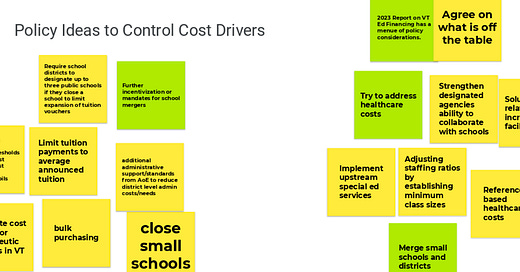Commission Assigned to Solve Property Tax Crisis Suggests More Taxes/"Bake Sales"
Tuitioning program likely to be scapegoated by government school special interests.
Before we get into the meat of today’s topic, here’s a quick review of how property tax reform has gone down in Vermont since Act 60 became law in 1997:
Property taxes go through the roof…. A critical mass of voters howl…. The Democrat controlled legislature promises in public they’ll do something about…
Keep reading with a 7-day free trial
Subscribe to Behind the Lines: Rob Roper on Vermont Politics to keep reading this post and get 7 days of free access to the full post archives.



